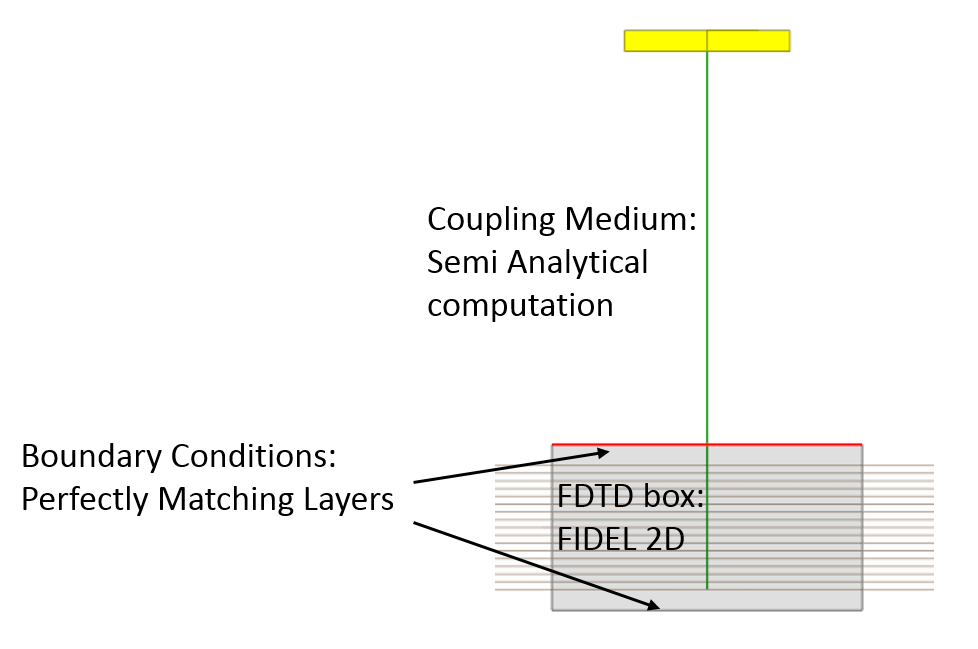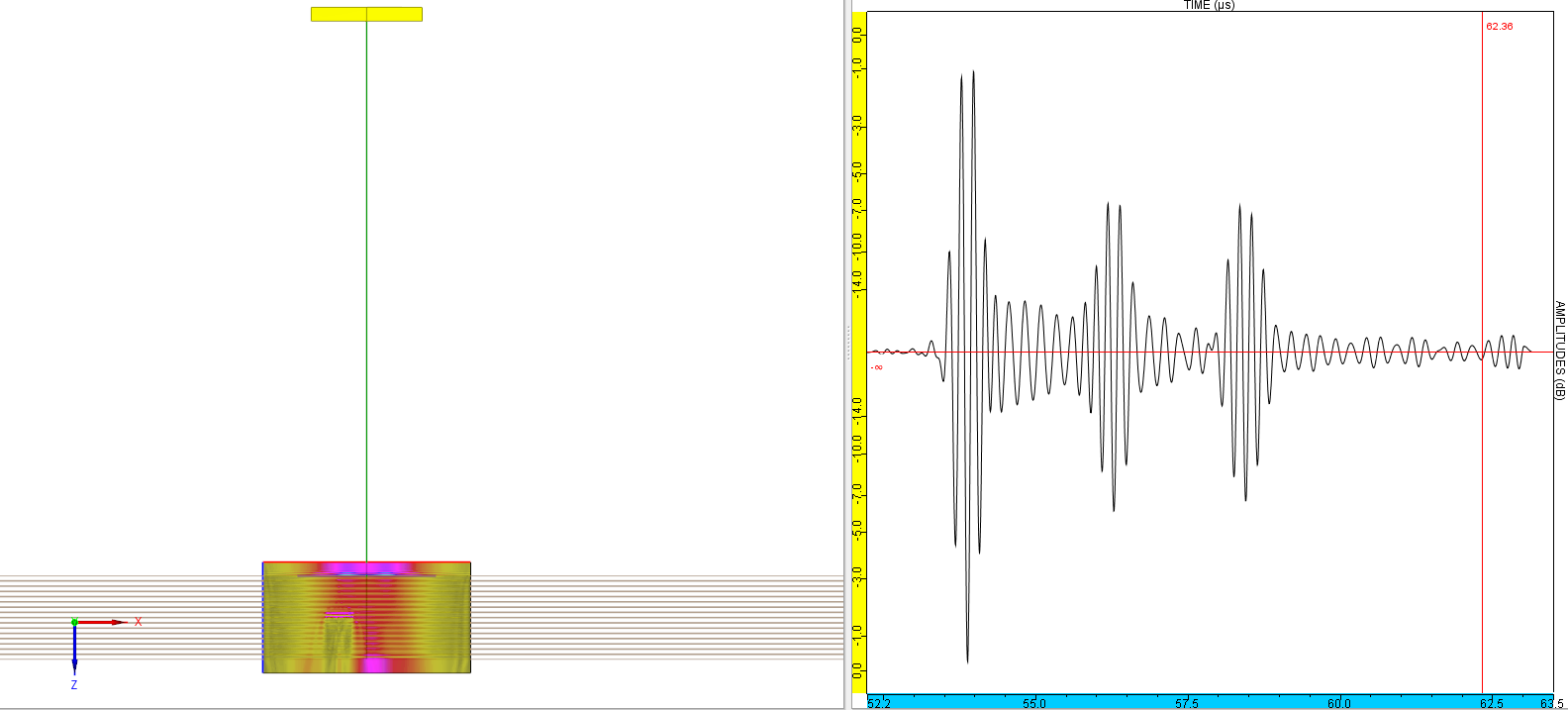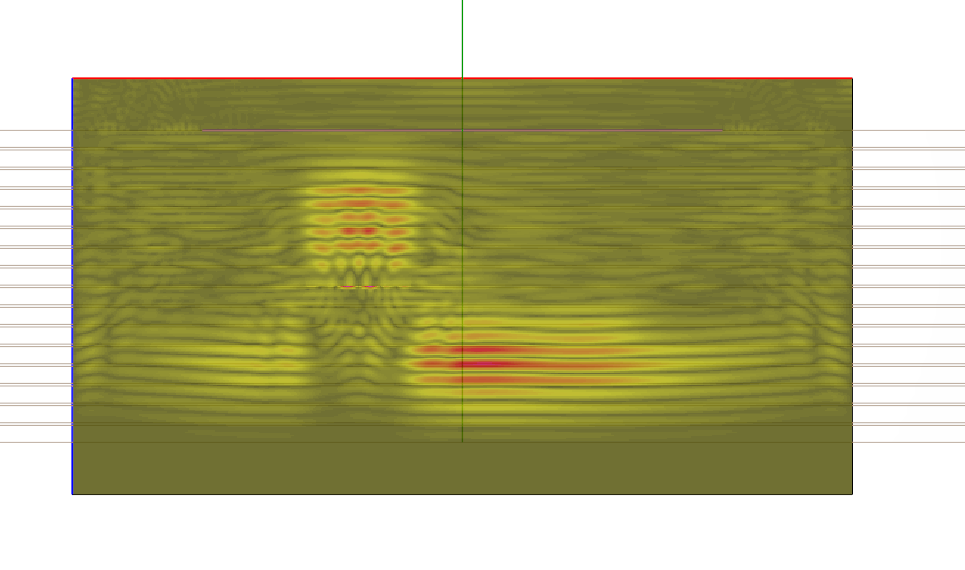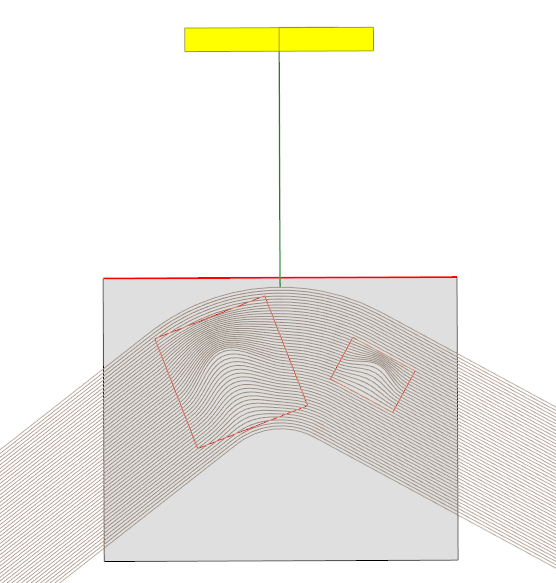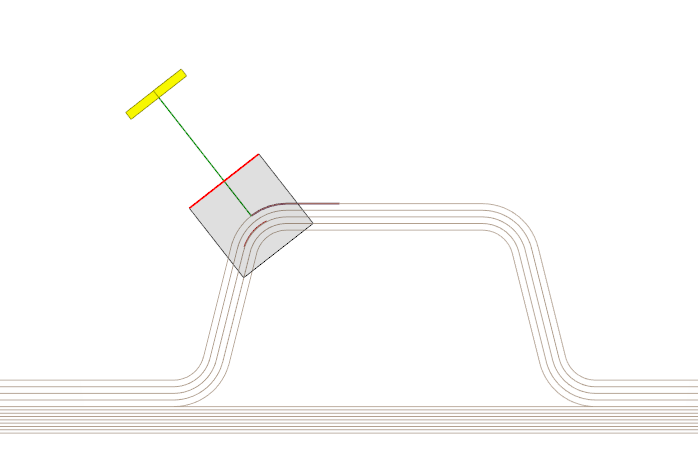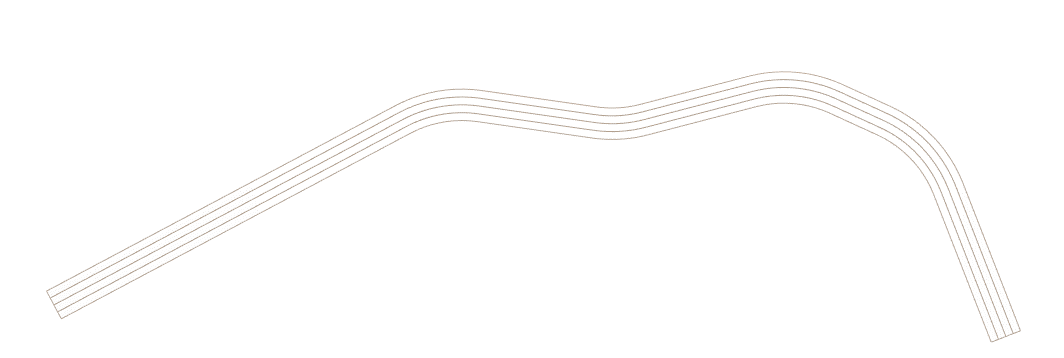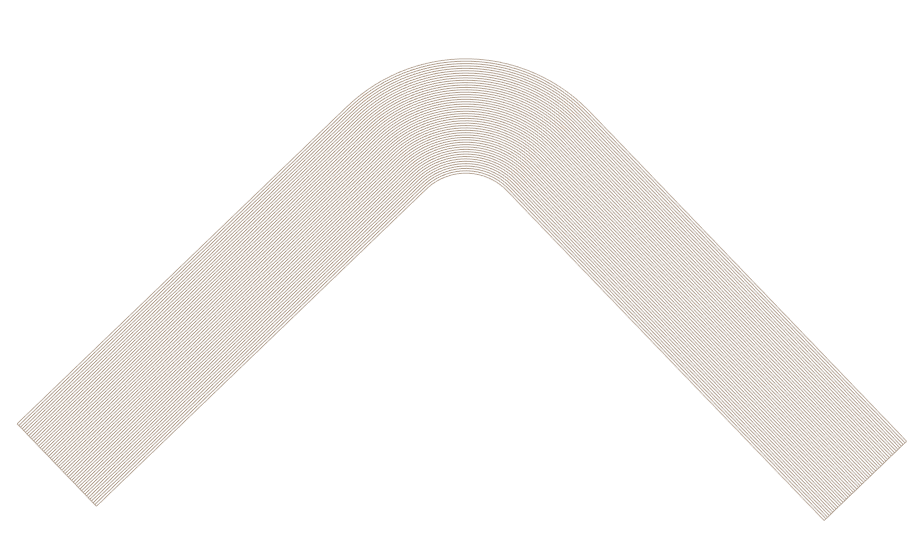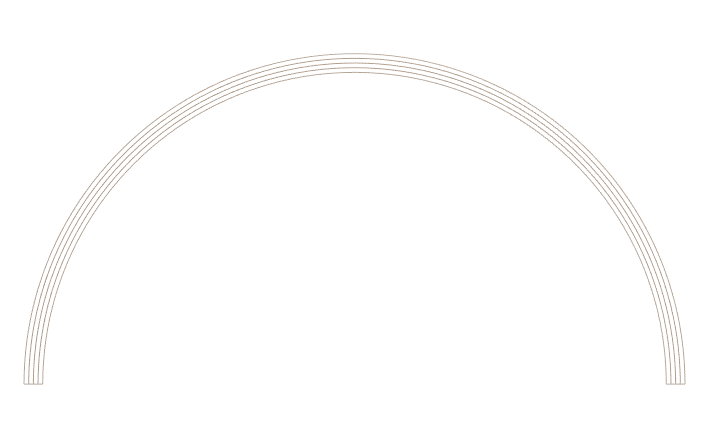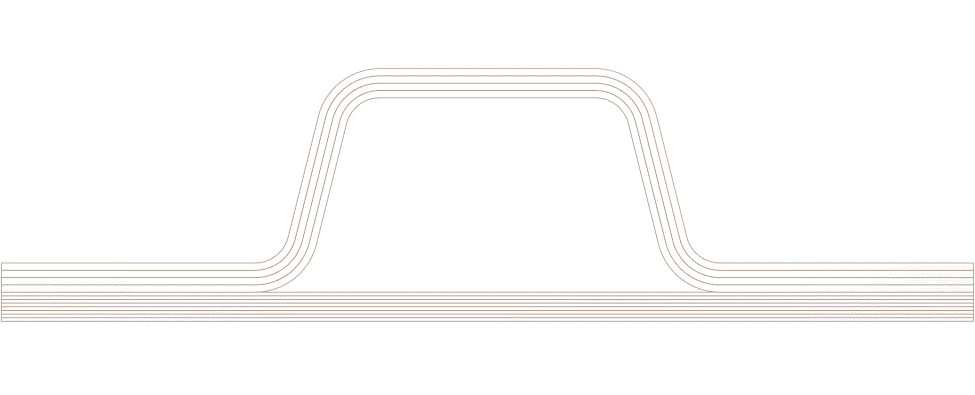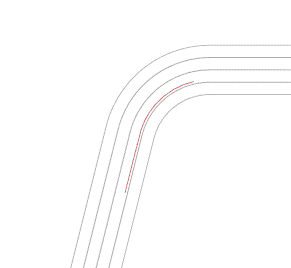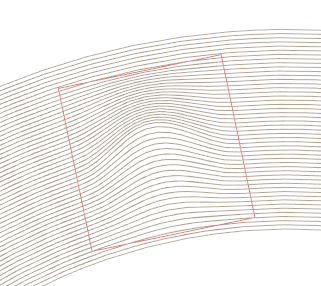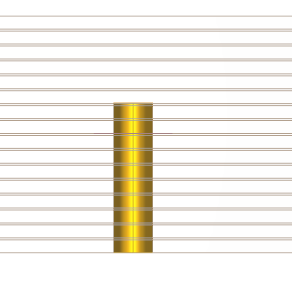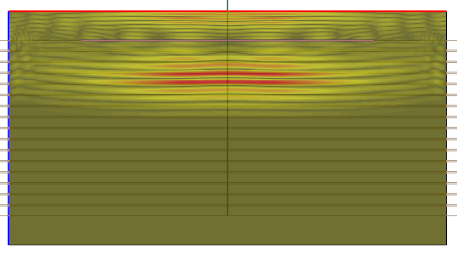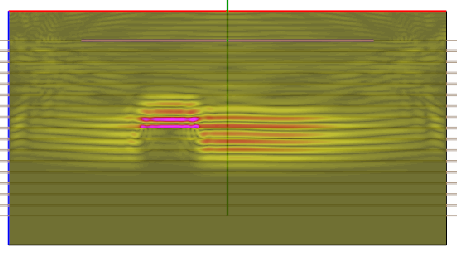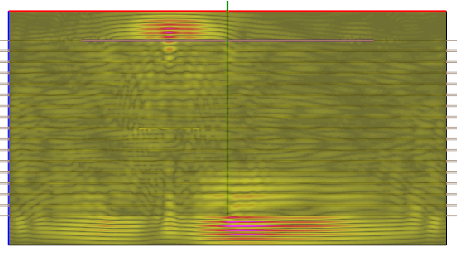An hybrid computation for more powerful computation on composite structures
CIVA FIDEL2D is an “add-on” module available with CIVA UT modeling. This tool is a hybrid module, gathering the benefits of CIVA semi-analytical computation models and finite differences method (time domain, FDTD) developed in the FIDEL code (from AIRBUS Innovation Group). This module is dedicated to composite structures and allows considering additional configurations compared to semi-analytical models already integrated to the CIVA UT Composite perspective.
The FDTD box: CIVA FIDEL2D coupling principle
In CIVA FIDEL2D a rectangular computation box is defined. Outside this box, the ultrasonic beam propagation is accounted for by CIVA tools (pencils method, semi-analytical computation). Inside this box, beam propagation and interaction phenomena are modeled by finite differences numerical method (FDTD) from the FIDEL code, « fed » at the box edges by the incident field computed by CIVA (using PML limit conditions). In this module, the FDTD numerical method considers the propagation and the different interactions of the ultrasonic wave in the composite while the fast semi-analytical models consider with the quick computation the ultrasonic propagation in water and the emission-reception phases in the transducer.
The model is limited in the current version to 2D computations.
Simulation examples:
CIVA FIDEL2D interest is to consider the heterogeneity of the composite plies in the calculation, as opposed to the homogenized and continuously variable approach available in the semi-analytical module of CIVA UT composite perspective. Thus, the interaction between the plies is inherently taken into account. This also overcomes some limitations of the semi-analytical models. This module also benefits from the ease of use granted by the dedicated environment of the composite perspective in CIVA (specimens and predefined materials structure, relevant parameters for composite inspection, etc.).
Examples of the main benefits of this module:
- Interference and inter-layer resonance taken into account to reproduce the structural noise observed in the inspection of a multilayer composite structure
- Possibility to simulate layers of resin only (for example epoxy) located between the composite fiber plies
- Possibility to model ply waviness
- Possibility to compute the response of a very small defect compared to the wavelength
- Visualization of the beam propagation and its interaction with the composite structure and its defects if any.
Specimens
Available specimens in this module are:
- Cylindrical or planar specimens
- Parametric curved part
- Parametric "Omega" stiffener
- Complex CAD profile
Probes
As CIVA FIDEL2D is a 2D code, only a cross-section of the transducer is modeled.
Only immersion transducers are allowed (planar or curved).
The probe geometry type is not restricted with respect to the possibilities of CIVA: the user is able to select single-elements transducers (cylindrical, rectangular or elliptical) or access to Phased-arrays (1D or 2D) available in CIVA UT. The user must therefore ensure that the modeled probe is consistent with a 2D calculation approach (in terms of focusing type or crystal geometry for example).
Only the Pulse-Echo configurations are allowed (no through-transmission inspection).
Phased-array settings
All CIVA phased-array settings from CIVA UT are available in CIVA FIDEL2D.
Flaws
Four flaw types are available in CIVA FIDEL2D:
- Delamination (Follows the curvature of composite layers if any)
- Ply waviness
- Planar rectangular flaw
- Flat Bottom Hole
Results: visualization of the beam-flaw interaction
In addition to classical curves and images available in CIVA UT (A-scans, B-scans, 3D views), CIVA FIDEL2D allows to visualize the interaction phenomena between the waves and the composite structure including its flaws if any. It is possible to build a video of the propagation and interaction phenomena within the calculation box.
Simulation keeps quick and easy
Besides its advanced calculation possibilities, the coupling between CIVA UT and FIDEL 2D brings other advantages: the calculations are faster than those made with a 100% numerical code since the path in the coupling medium is computed by a semi-analytical method, while important phenomena inherent in such composite structures (noise, specific flaws) are considered by the numerical code for beam-defect interaction. The configurations are defined using the user-friendly CIVA graphical interface, with very little input parameters to set for the finite difference computation. Thus, CIVA FIDEL2D remains easy to use.

